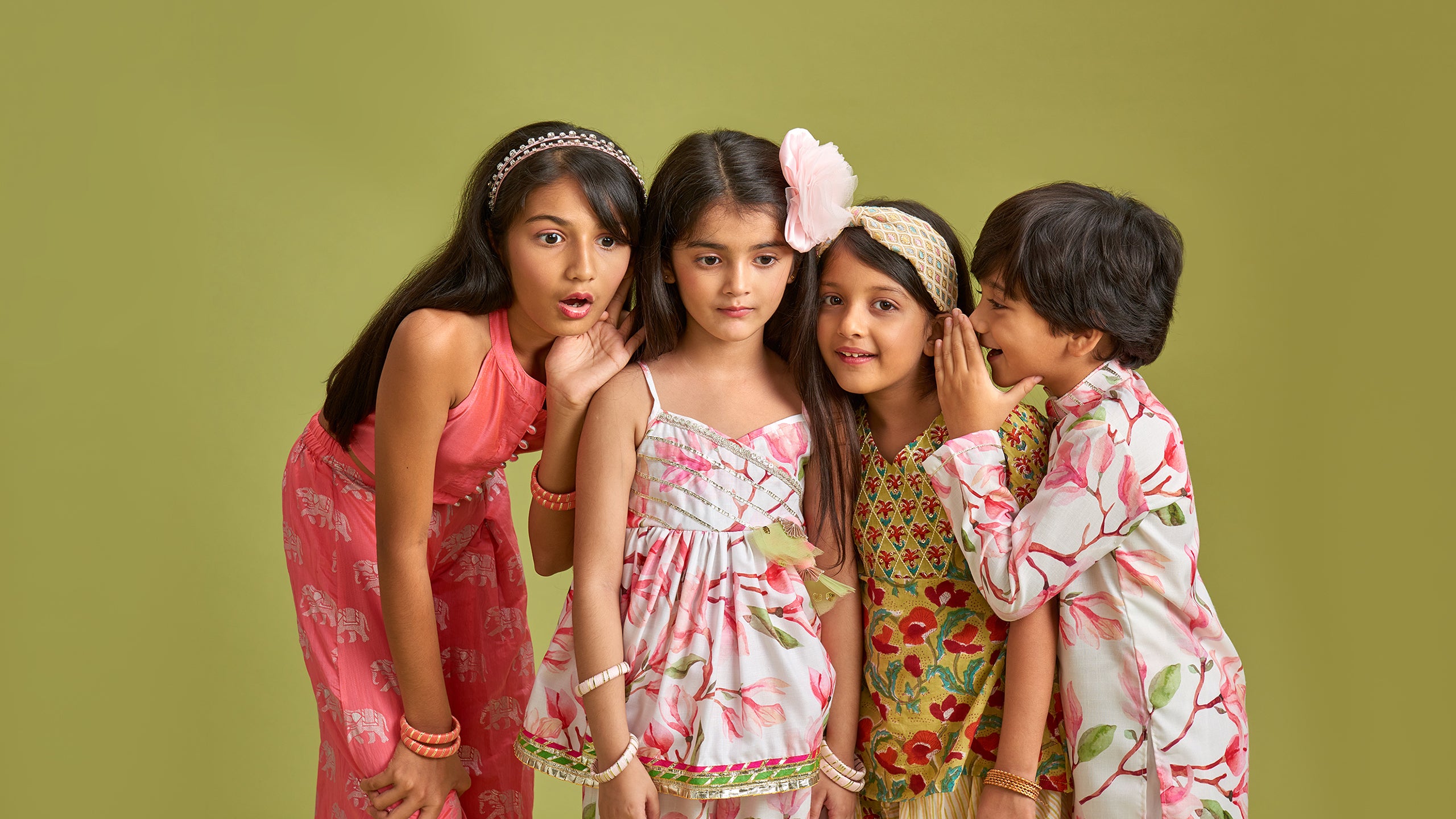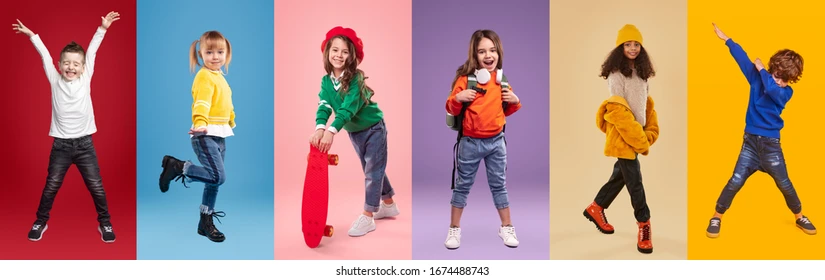
Introduction
Kids wear isn’t just about dressing children—it reflects family values, market innovation, and cultural shifts. Over the past few years, it has evolved significantly, blending style with sustainability, safety, and individuality. In 2025, kidswear is a tapestry woven from eco-friendly fabrics, inclusive designs, technological enhancements, and consumer-conscious branding.
Eco-Friendly Materials
Kids Wear Today’s conscious parents actively seek kidswear made from organic cotton, bamboo, Tencel, and recycled fabrics. These not only reduce environmental impact but also are gentler on sensitive skin—essential for sleepwear and everyday wear . In India, about 80–89% of parents are willing to pay a premium for eco-friendly kids’ clothe
Non‑Toxic Production
Brands and retailers that align with these values Kids Wearby offering organic, durable, inclusive, and thoughtful designs, while leveraging e-commerce and community engagement—stand to win in a rapidly evolving market. Meanwhile, parents can make confident choices that support their children’s growth, safety, and personal expression.
Production
Recent reports warn that many children’s clothes may contain toxins like PFAS, formaldehyde, and synthetic dyes—known to cause skin irritation or worse Experts suggest using certified organic fabrics (e.g., GOTS, OEKO-TEX) and sticking to undyed or unprinted cotton to reduce risk
Design & Fashion Trends
Gender-Neutral Style
Kids Wear shift to unisex designs is empowering, inclusive, and practical. Neutral palettes, nature-inspired prints, and relaxed fits let items be hand-me-downs across siblings, extending wear life
Mini‑Me Fashion
Parents love matching looks with their kids, in tailored blazers, chic dresses, and soft pastels. This trend mirrors adult fashion in mini sizes and resonates well in the Indian market with big brands exploring “parent & child coordination” lines .
Bold Prints & Retro Vibes
Kids Wear Named “dopamine dressing,” kidspeak is embracing bold neon tones, oversized florals, vintage-inspired embroidery, and retro 70s–90s motifs—capturing fun and nostalgia
Comfort & Functional Wear
Soft knits, elastic waistbands, moisture-wicking fabrics, reversible designs, and stain-resistant materials dominate—built for movement, time in school, and outdoor play . Brands are also adding UV protection, shrink resistance, and durability features.
Tech‑Enhanced Apparel
Innovation is entering kidswear via temperature-regulating fibers, GPS-enabled jackets, UV-blocking fabrics, and smart materials—adding safety and convenience for parents Adaptive & Inclusive Clothing
Clothes designed for children with disabilities—featuring magnetic buttons, adjustable fits, and sensory-friendly fabrics—are gaining ground and reflection of a wider social responsibility
Circular Fashion & Brand Strategies
Reuse Platforms & Trade‑In Models
Circular eco-luxury is being pioneered by brands offering trade-ins or resale programs, like Firebird Kids in the UK or Indian startups. This ensures longevity and value even after outgrowing clothes
Digital Presence & Consumer Engagement
E-commerce is central—social media tie-ins, Instagram-worthy designs, AR “try-ons,” influencer collaborations, and user-generated campaigns are critical engagement tools .
Moreover, in-store experiences like DIY custom stations or themed events connect emotionally with families
Regional & Cultural Dynamics
Premium & Ethnic Fusion
In India, demand for clothing that merges Western trends with traditional embroidery, festive vibrancy, and ethnic prints has increased—generating new business for designers like Payal Singhal and Ed‑a‑Mamma
Market Expansion
E-commerce and organized retail reaching Tier II/III cities mean more families now have access to branded, quality kidswear, supporting inclusion and penetration beyond metros
Tips for Parents & Sellers
For Parents:
- Choose natural fibers like cotton, bamboo, Tencel and certified organic items to avoid toxins
- Prioritize comfort and fit—elastic waists, breathable fabrics, no rough seams.
- Look for versatile or reversible pieces and encourage sharing or hand-me-downs.
- Invest in durable basics, especially jackets, thermals, or festive wear—they last longer and hold value.
For Sellers/Brands:
- Embrace sustainability: offer GOTS/OEKO-TEX certified garbs, recycled packaging.
- Add functional enhancements: UV protection, stain-proof finishes, tech inserts.
- Promote inclusivity: unisex ranges, adaptive clothing, curated curves.
- Engage digitally: AR try-on features, social media content, influencer partnerships.
- Start reuse/resale initiatives: trade-in models boost loyalty and sustainability.
Conclusion
Kidswear in 2025 is a vibrant intersection of fashion, function, and ethics. The modern parent seeks clothes that are:
- Safe and non-toxic – free of harmful chemicals
- Sustainable – produced responsibly and possibly returnable
- Stylish and inclusive – reflecting family values and individuality
- Comfortable and tech‑savvy – made for playful lifestyles and smart living
Parents prioritize soft, breathable fabrics like cotton, linen, bamboo, and jersey for kids’ clothing—these materials feel gentle on skin, regulate temperature, and stand up to washing and play Synthetic blends like polyester, spandex, and rip-stop nylon also appear in activewear and outdoor gear for durability and stretch
Tech-Enhanced & Sustainable Fashion
Smart fabrics offering UV protection, temperature regulation, and moisture-wicking are trending alongside eco-conscious materials like organic cotton, bamboo, and recycled textiles
Let your little ones shine with Kids Wear Trendys – a perfect blend of comfort, style, and playful vibes. Our trendy collection is designed to keep kids looking cool and feeling great all day long. Whether it’s a birthday party, school day, family outing, or just playtime at home, our outfits are made to move, breathe, and last.
website is https://royalraizada.online



Leave a Reply